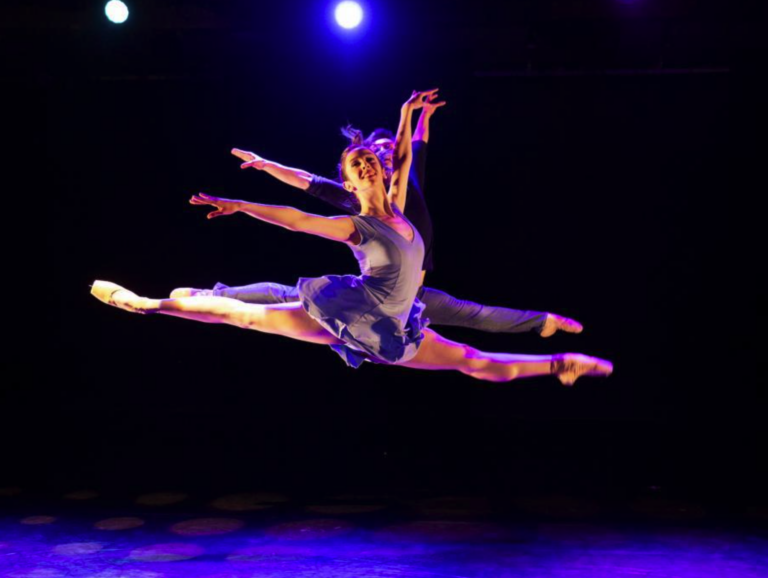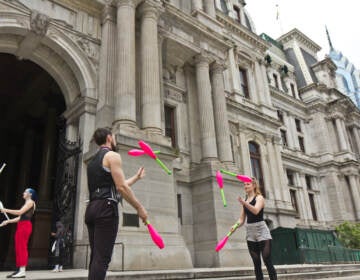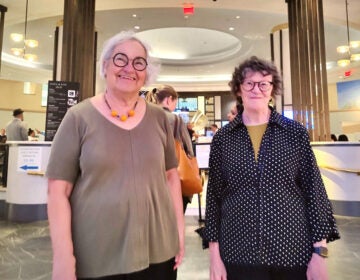Philly’s arts and culture scene is still a ‘powerhouse,’ but pandemic recovery remains uneven
Despite some success stories, many of the region’s arts and culture organizations have not returned to pre-pandemic levels.
Listen 1:16
File photo of Philadelphia Ballet performers (Courtesy of Philadelphia Ballet)
From Philly and the Pa. suburbs to South Jersey and Delaware, what would you like WHYY News to cover? Let us know!
Philadelphia’s arts economy is slowly recovering from the pandemic shutdowns but is still well below what it was five years ago, according to a new report.
The arts and culture economy created a $3.3 billion impact in the greater Philadelphia area, or about 3.5% of the regional economy. That is down from $4.1 billion in 2017.
The Greater Philadelphia Cultural Alliance generated “Arts, Culture & Economic Prosperity: Greater Philadelphia” based on data collected by Americans for the Arts. It is the only major study based on direct surveys with audience members, asking how they spend their money.
The study shows that 13.5 million people attended an art event or cultural site in 2022, generating $429 million in tax revenue. That is down from pre-pandemic levels, but those who go out are spending more. Audience members, on average, spend $49.19 per event on meals, transportation, etc., not including the price of the ticket. That is about $5 more than in 2017, adjusted for inflation.
Americans for the Arts conducts its national survey every five years. The last came out in 2017, but this one was delayed due to the pandemic. The survey reflects audiences in 2022 and 2023.
Because the last few years of the arts economy have been particularly turbulent, audiences surveyed a year to two years ago may not represent them now. Lower overall attendance creates a small survey pool. GPCA president and CEO Patrician Wilson Aden believes the Americans for the Arts data is conservative.
“While we have high standards for ‘Prosperity,’ it’s not perfect,” Aden said. “We believe that in this study in particular, our impact findings may actually be understated.”
Nevertheless, Aden said it “reinforces that the arts and culture sector remains a powerhouse for Greater Philadelphia, delivering profound economic and social benefit to our region.”
“Prosperity” confirms some general trends GPCA and PA Humanities tracked in their own report earlier this year, CultureCheck, which surveyed arts and culture non-profit organizations across Pennsylvania. It shows that only about a third of its surveyed organizations are operating at pre-pandemic levels. Most of those recovering best were history-based organizations. Only about 15% of performing arts organizations are operating at pre-pandemic levels.
The Americans for the Art data shows how money moves through the arts sector. Of the $3.3 billion economic impact, $1.9 billion is direct expenditures by audiences and organizations, resulting in $1.4 billion in actual household income.
The lion’s share of income from art and culture organizations — about 3 ⁄ 4 — is generated inside Philadelphia County, with its high concentration of nonprofits. But less than half of that money stays there. 60% of that income is distributed to households across the region as salaries, wages, and payments to arts workers and vendors.
59% of out-of-town respondents said they traveled to Philadelphia for a specific art or cultural event, and about 53% said they would go elsewhere if that event were not in the city.
“This means that Philadelphia and the surrounding counties lose out on valuable audience dollars if arts and culture activities decrease in the region,” said GPCA director of research, Kristen Vinh.
The Prosperity report comes out simultaneously with the Center City District’s more localized economic recovery report. “State of Center City” tracks the health of specific downtown arts organizations. Most of them are not attracting audiences like they did before the pandemic.
Even arts and culture organizations that saw tremendous gains in the past year are still behind where they were five years ago. Opera Philadelphia saw a 73% increase in audiences last year, but remains at just 45% of its pre-pandemic audience.
Philadelphia Ballet was one of the few companies that overcame the pandemic slump. It had its most successful run of The Nutcracker during the 2023 holiday season and added more performances. The company saw a 54% jump in overall attendance from 2022, bringing its numbers 19% higher than 2019.
The pandemic has caused shifts in how people spend money, increasingly sending it outside the region through online purchases. Vinh described that as “leakage,” emphasizing the power of arts and culture events to keep money circulating on a local level.

Get daily updates from WHYY News!
WHYY is your source for fact-based, in-depth journalism and information. As a nonprofit organization, we rely on financial support from readers like you. Please give today.





